Learn several methods to waterproof fabrics including upholstery, outdoor cushions, and even your favorite outdoor jacket using a water repellant that won’t change color. A simple, 10-minute process to make furnishings and fabric spill proof for easy maintenance and longevity.
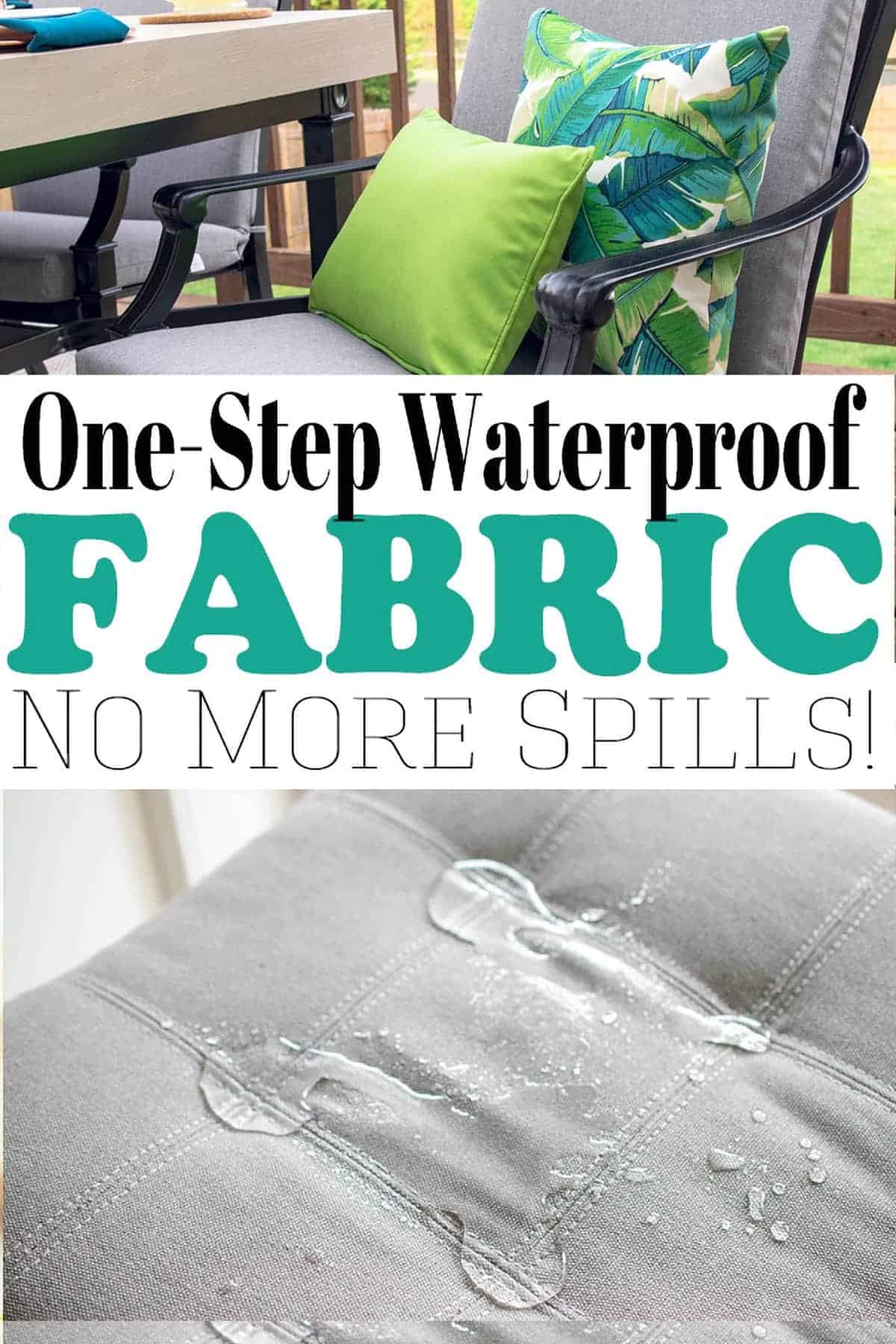
My son is a master of disaster when it comes to food spills, stains, and general oopsies. Truthfully, he spills something nearly every single day. Our old bar stools became so cringe-worthy that even The Rug Doctor himself cried “Uncle.”
When it came time to select new bar stools for the custom kitchen island we built, I was sweating bullets. Everything looked so fragile, so delicate, so pristine! I’m not proud to admit this, but I seriously considered covering my brand-new furniture in uncomfortable hard plastic.
Rather than banning everyone from the new furniture, I tested and reviewed several methods, and the best are durable, spill proof, and require no melting of waxes or a double boiler. Now you can have the same shortcuts and both methods take less than 10 minutes active time!
Ready to learn the secret to spill-proof your upholstery, sports gear, rain jackets, and outdoor furniture?

The entire process took approximately 10 minutes, minus drying time. I’m quite impressed with the results. Spills simply bead up on the fabric where I gently dab them away with a damp sponge. Even ketchup or set-in spills have been a breeze to clean!
What You Will Need
- The item you want to waterproof
- Drop cloth or Tarp to protect the surrounding areas
- Bucket and water to test beading
- Waterproofing Agent – read the methods to determine which product is best for your situation!
Fabric Wax Note: In my research and testing, the only all natural or food safe method I could find was to melt wax such as beeswax to create a water-resistant seal. Paraffin wax is made from petroleum, so it isn’t food safe. These waxes can be useful but will alter the look and feel of most fabrics. It works well on leather to shine it up though. However, if you are interested, you can check out this fabric wax product that is all natural.
Method 1: Wash and Repel
This water repellant method works well for clothing, gloves, tarps, and other materials that can be put into a washer or bucket. I generally prefer this product and process for items like sporting outerwear for rainwear, ski, boating, motorcycle gear, hunting and hiking. I have used it a few times to waterproof old tent shells.
Which product you use will depend on what type of fabric you have.
- The hardshell protector is meant for use with items with waterproof outer layers, like a raincoat or a non-insulated tent.
- The softshell protector is meant for use with items that have an insulating layer that is similar to a fleece but has a smooth outer surface.
- There are also products specifically to leather, suede, and canvas material.
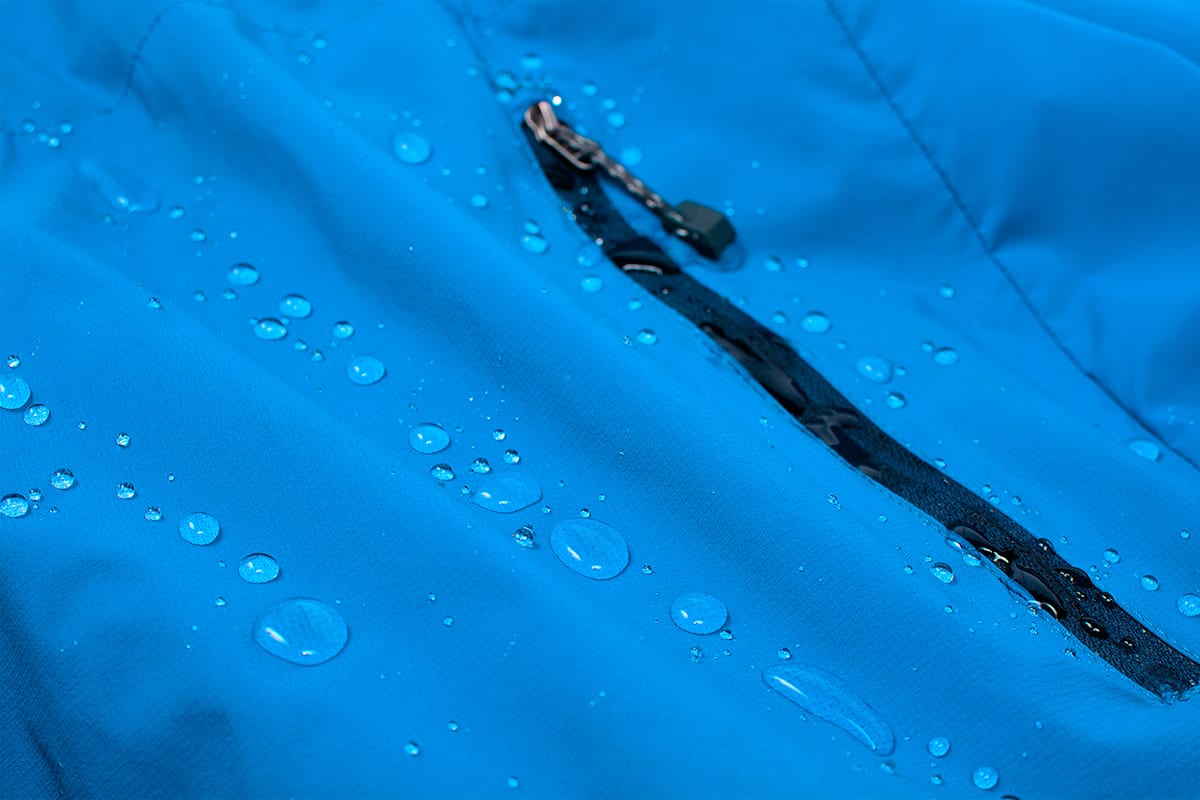
Directions
Step 1: Make sure to shake the washing agent well. Add to machine and then add the garment or fabric to the machine. Do not remove or allow the item to dry before step 2. It should be damp. If I am handwashing, I empty the bucket and wring out excess water out of the fabric.
Step 2: Shake the TX.Direct bottle very, very well. Add to the washing machine or bucket. Wash as directed, the same as step 1.
Step 3: I generally prefer to air dry the items as most of them aren’t suitable for the dryer (tent covers, rain gear, etc). However, the directions state that the items can be tossed in a dryer after washing.
Quick Tip:
This can be used in a variety of machines, including high efficiency machines. For HE machines, uses about ⅔ the suggest amount of the cleaning “Wash” and the normal amount of waterproofing wash.
Method 2: Waterproofing Spray
This method works best for items that can’t be washed like upholstery, outdoor cushions, tightly woven natural, twill, or cotton fabrics. I use and love this Fabric Guard repellant product because it is easy, fast, marine grade, safe for all fabrics, and works very well.
For 3 bar stools, I used the 16 oz bottle, and had about half left over. Because we are using the spray on cushioned, upholstered fabric, it takes more than a thinner tightly woven fabric like a tarp or tent. The smaller bottle would cover about a medium ottoman size and several pillows. The instructions say about 40 sq feet for heavy fabrics.
Waterproofing Directions
***Spray outdoors only because there are fumes. Full sun is also best for quicker drying and curing. I also recommend wearing latex gloves.
Step 1: Lightly spray the entire surface, holding the sprayer 6″ to 8″ away from your fabric. Make sure to slightly overlap each pass to make sure the entire surface is covered. The surface should be evenly damp/wet, but no need to completely saturate. Let your project dry for about six- eight hours. Full sun is best for curing.
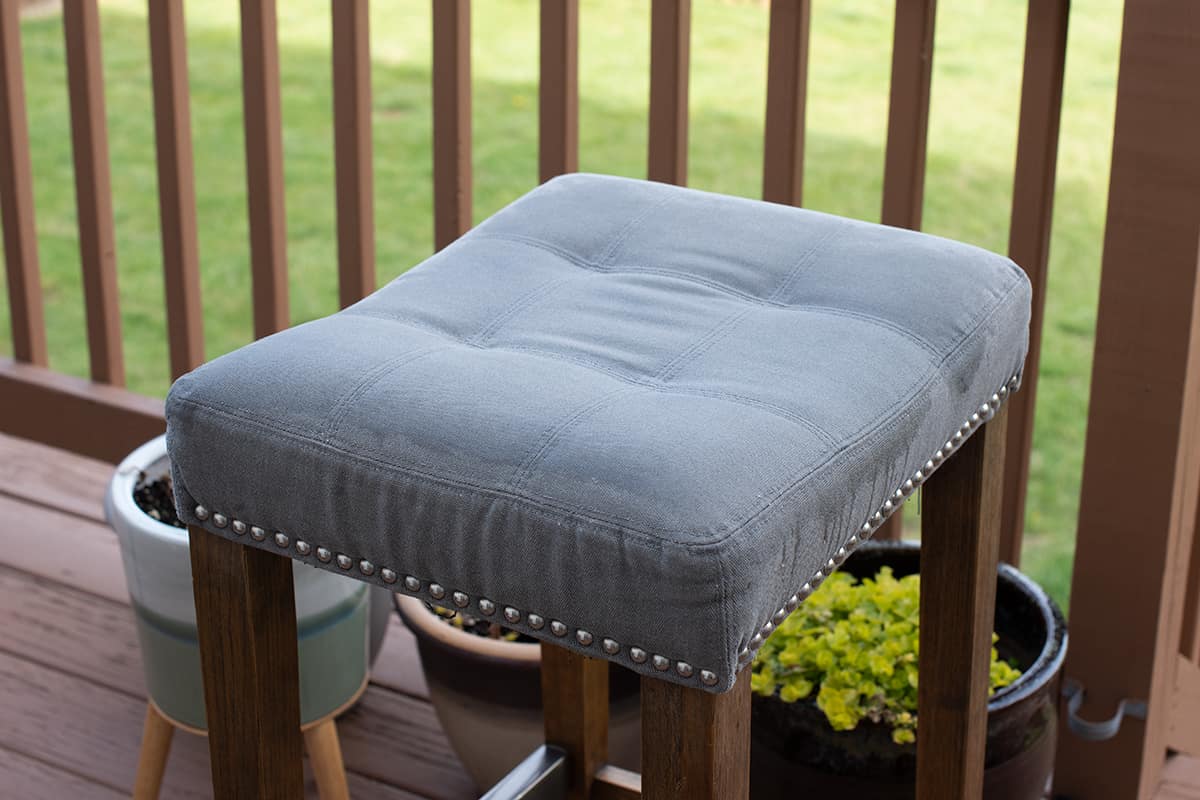
Step 2: Test by pouring water on fabric. After it is dry again, reapply to any spots that did not fully bead.
Step 3: When all fumes have dissipated, feel free to bring it back in the house. I let my bar stools sit out most of the day in full sun and it worked perfectly.
Quick Tip:
Even though I did not experience any color change, I recommend testing an inconspicuous area first for any method you use.
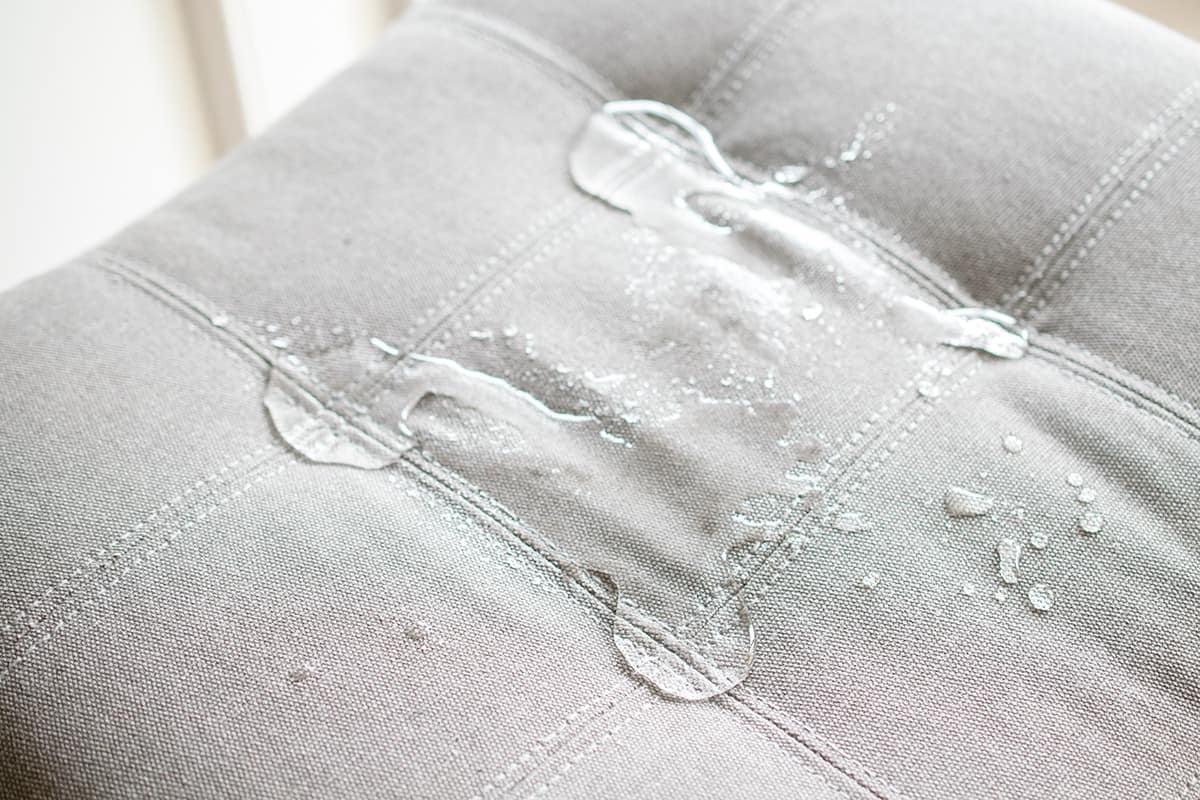
How long does the waterproofing last?
I have actually maintained these barstools for 7 years now. They are holding up great! I have never had a color change problem and no stain has ever remained (even ketchup and hardened chocolate syrup). I do clean and respray them every 8-10 months. We sit on them every single day and my son spills something pretty much every dinner, so I would say that I am very satisfied with that.
For my tent and hardshell active wear, I haven’t had to reapply the wash, but I use it much less.
Hope this quick tip helps if you have messy eaters like I do!
Looking for Quicker DIY Projects for the Home? Check out these posts:
Frequently Asked Questions
Both spray and wash-in methods work for outdoor fabrics. Do test an inconspicuous area for color change first.
If the fabric has it’s waterproofing intact, it shouldn’t be dirty underneath the water protection. Soapy water will clean it up easily and do pay attention to the fabrics cleaning instructions label.
For work shoes made of leather, I like a quality product such as beeswax-based fabric wax. After cleaning and drying the boots, heat the surface up gently with a hair dryer (but not too hot!) and rub the wax into the fabric vigorously. Buff any excess away after it cools.
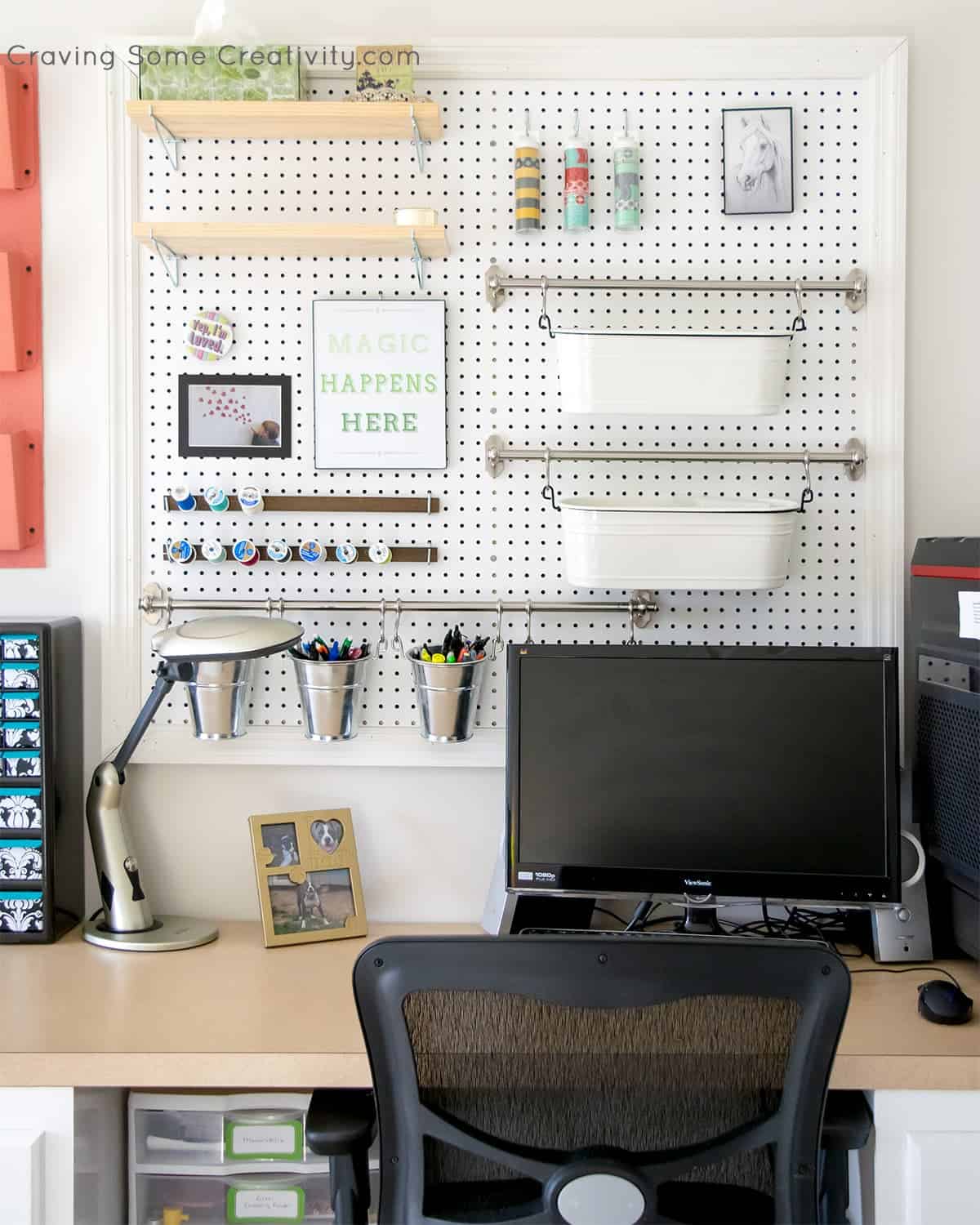
Grab our free series "Weekend Home Projects that will Transform Your Life" Sign up below to receive updates including free printables, organization tips, home improvement projects, recipes and more! |
More Spring Home Projects
PS I love seeing your creations! Be sure to take a photo and tag #cravingcreative on Instagram! You can also stay in touch with me through following me on Instagram, Pinterest, and subscribing to the newsletter!
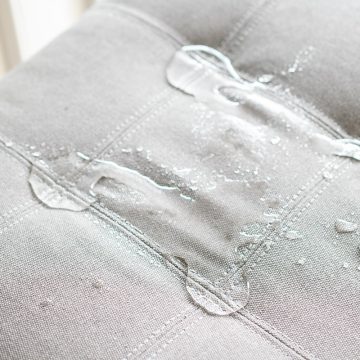
How To Waterproof Fabric
Tools
- Fabric ready for waterproofing Cleaned and vacuumed
Supplies
Instructions
- Only spray outdoors! Lightly spray the entire surface, holding the sprayer 6″ to 8″ away from your fabric. Make sure to slightly overlap each pass to make sure the entire surface is covered. The surface should be evenly damp/wet, but no need to completely saturate. Let your project dry for about six- eight hours. Full sun is best for curing.
- Test by pouring water on fabric. After it is dry again, reapply to any spots that did not fully bead.
- When all fumes have dissipated, feel free to bring it back in the house. I let my bar stools sit out most of the day in full sun and it worked perfectly.


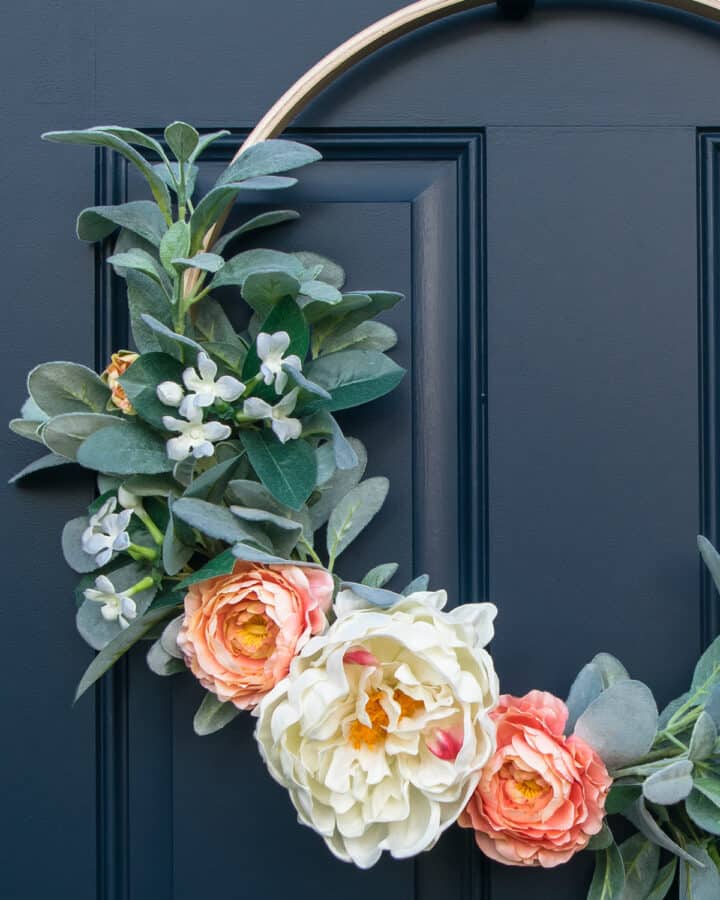

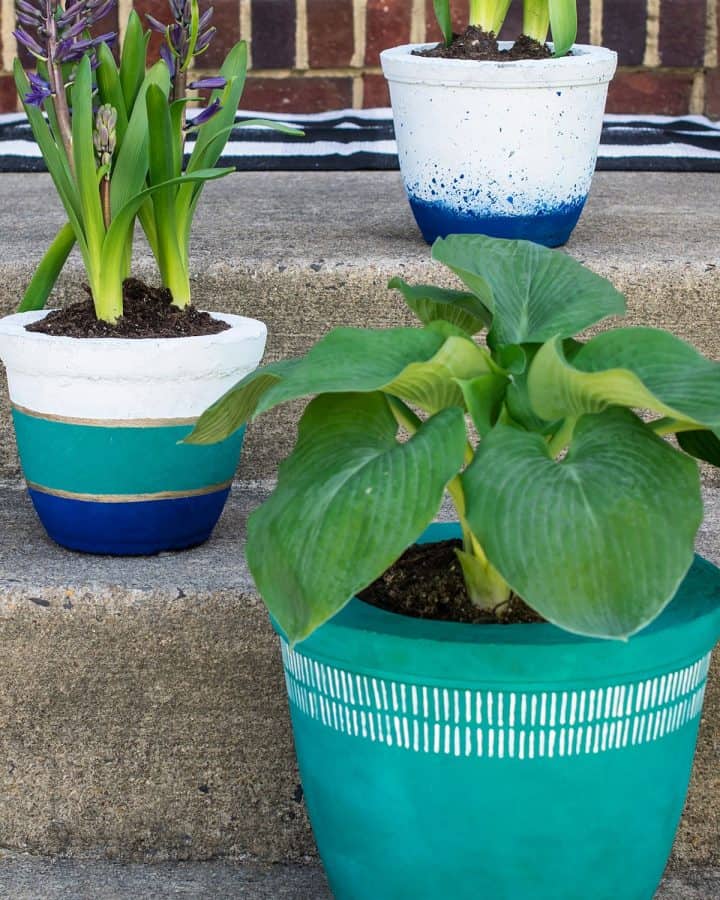
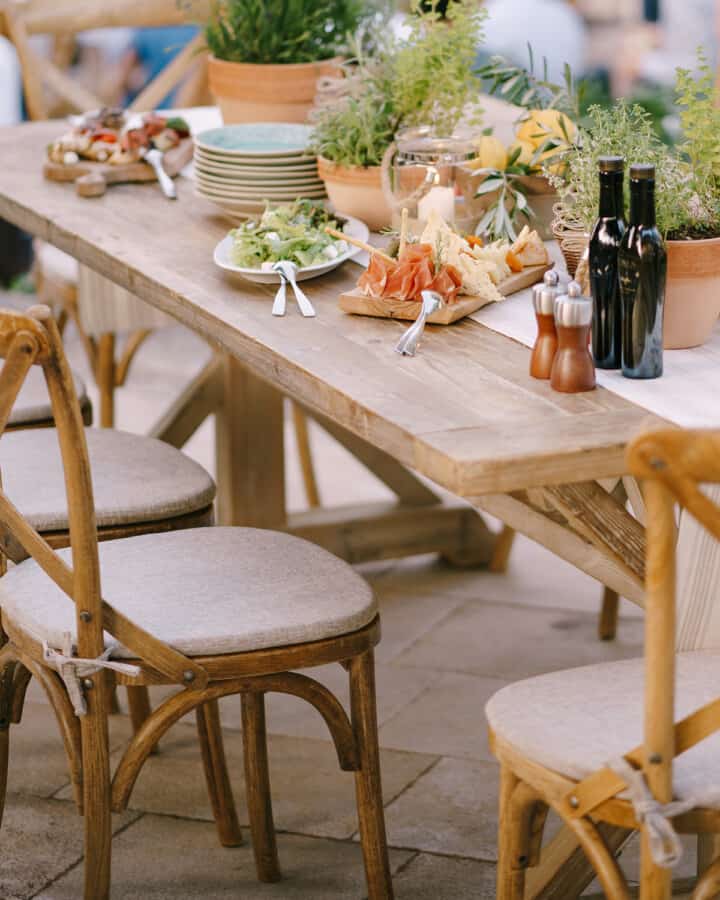
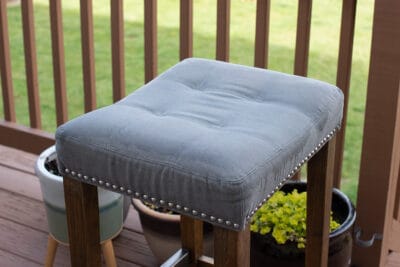
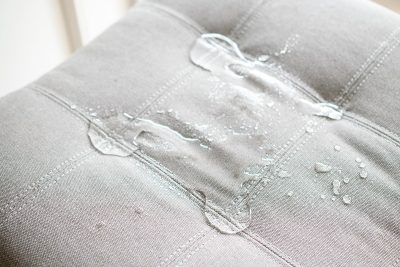

Christine says
Have you used clear silicone and white spirits for the waterproofing ?
Rachel says
I have not. Unless there is something I misunderstand, I can’t imagine that either of those products would be safe on fabrics.
David johnny says
What a great way to waterproof fabric, seems like it is very easy and simple. I would like to waterproof my garden fabric chairs. Thank you very much for your article.